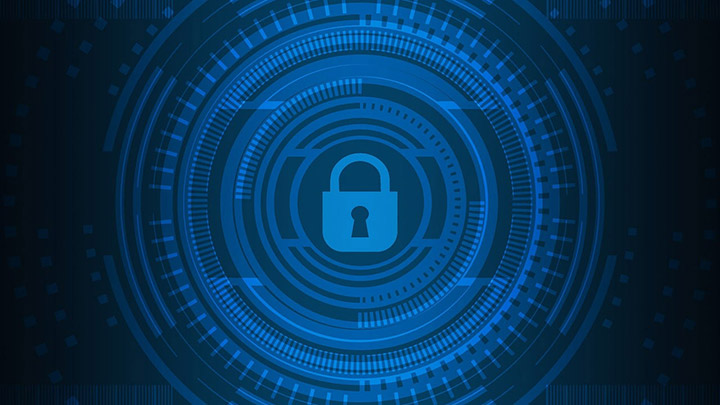CMC Threat Intelligence provides organizations with actionable insights into cyber threats, enabling them to anticipate and mitigate emerging attacks, prioritize vulnerabilities and optimize defenses, make informed security decisions, and adopt a proactive cybersecurity posture to reduce cyber risk through threat knowledge. In essence, CMC Threat Intelligence allows organizations to get ahead of cyber threats rather than merely react to them after the fact.
Implementing robust CMC Threat Intelligence capabilities empowers organizations to have more intelligent, resilient, and effective cybersecurity programs by leveraging comprehensive threat insights to fortify their defenses before attacks occur. With CMC Threat Intelligence, organizations can take a strategic, data-driven approach to cybersecurity that focuses on risk mitigation through advanced threat detection and analysis. This proactive security posture powered by CMC Threat Intelligence solutions leads to greater cyber preparedness and resilience.
Cyber threats pose a growing risk to businesses of all sizes. As cybercriminals become more sophisticated, no organization is immune to potential attacks. Implementing cybersecurity measures is essential for protecting sensitive customer and business data.
This article will provide an overview of cyber threat intelligence (CTI) and explain why it is a critical capability for managing cyber risk. We will outline the key components of a CTI program, the steps for implementation, and the tangible benefits stronger threat intelligence provides. Developing CTI capabilities can empower businesses to detect emerging threats, improve security operations, and take proactive measures against malicious actors. For any organization, CTI is an investment in greater cyber resilience.
Why CMC Threat Intelligence Matters
Cyber threats are growing more frequent and sophisticated. All organizations need to be proactive about security. CMC threat intelligence helps in four key ways:
- Improves risk management – Quantifies specific threats to prioritize defenses and investments.
- Enhances security operations – Identifies indicators of compromise for faster detection and response.
- Provides early warnings – Surfaces emerging threats and targeted campaigns.
- Enables proactive defense – Anticipates attacks to disrupt adversaries.
Threat intelligence transforms cybersecurity from a reactive to a proactive function. It’s like having an early warning radar for the digital domain. For any business, developing CMC threat intelligence capabilities should be a top priority for the following reasons:
- Reduces business risk
- Strengthens security posture
- Increases preparedness
With greater threat visibility, organizations can make smarter decisions to combat cyber attacks.
Key Components of CMC Threat Intelligence
Effective CMC threat intelligence involves multiple interconnected components working together. The major building blocks are:
Planning and Direction
The first step is identifying intelligence requirements and collection priorities. Key questions to answer include:
- What are our greatest areas of cyber risk?
- What threats or adversaries should we focus on?
- What intelligence would provide the most value?
This focuses data gathering on the most critical needs for informing security decisions. Planning and direction align CMC threat intelligence with broader organizational goals.
Collection
Next comes collecting data from various sources to build a knowledge base about threats. Important collection methods include:
- Open-source intelligence (OSINT) – Gathering info from public sources like hacker forums, technical blogs, social media, and dark web sites.
- Threat feeds – Curated streams of threat indicators from commercial providers or information-sharing groups.
- APIs and tools – Leveraging APIs and scraping tools to extract data.
- Manual research – Analysts directly scouring sources and assembling data.
Cybercriminal communities, security researchers, malware repositories, government agencies, and industry groups are key data sources.
Analysis
Raw data is enriched, correlated, and analyzed to derive actionable intelligence. Key techniques include:
- Data enrichment – Adding context through external data sources.
- Link analysis – Identifying connections between data points.
- Threat modeling – Forecasting potential future activities.
Skilled analysts interpret data, spot patterns, make inferences, and highlight key findings.
Dissemination
Finished intelligence products are disseminated to various stakeholders through:
- Intelligence reports – Written reports tailored to specific audiences.
- Briefings and presentations – Verbal briefings to key leaders and teams.
- Dashboards – Visualized threat data integrated with security tools.
- Feeds and APIs – Machine consumable threat data to automate defenses.
Threat intelligence must reach the people and systems that can act on it.
Orchestrating these components into an intelligence cycle facilitates transforming raw data into actionable threat insights. For any organization, focusing resources on developing core CMC threat intelligence capabilities provides an invaluable advantage against cyber adversaries.

Implementing CMC Threat Intelligence
Developing effective CMC threat intelligence capabilities requires careful planning and execution across four key areas:
Requirements
Defining intelligence requirements provides strategic direction for the program. Key activities include:
- Identifying high-priority threats and vulnerabilities.
- Determining critical intelligence needs and gaps.
- Setting collection priorities.
- Establishing key performance indicators.
Requirements focus efforts on gathering the most impactful intelligence. They also facilitate measuring the value delivered by CMC threat intelligence.
Team
A skilled team is essential for collecting, analyzing, and operationalizing threat intelligence. Key roles include:
- Analysts to extract insights from data.
- Managers to oversee operations.
- Technologists to support automation.
The team should possess technical expertise, analytical thinking, and communication skills. Fostering collaboration across roles enhances the intelligence cycle.
Technology
The right technology provides scalable and efficient threat intelligence capabilities. The core components are:
- Commercial solutions with analytics and workflows.
- Open source tools for collecting data.
- Custom platforms to fill gaps and integrate intelligence.
Technology enables automating repetitive tasks so analysts can focus on high-value work. Robust data management and visualization are also key.
Information Sharing
Joining trusted sharing circles expands access to relevant threat data. Steps for enabling sharing include:
- Joining industry groups like FS-ISAC.
- Forming trusted partnerships with peers.
- Anonymizing and standardizing data.
Information sharing amplifies knowledge and improves early warnings of emerging threats.
Orchestrating requirements, skilled teams, supporting technology, and collaboration is instrumental for building impactful CMC threat intelligence programs. The payoff is heightened cyber resilience.
Realizing the Benefits
Implementing robust CMC threat intelligence capabilities pays dividends across four areas:
Enhanced Risk Management
Threat intelligence strengthens risk management by:
- Quantifying threats – Threat models identify probable attacks.
- Prioritizing defenses – Intelligence guides smart resource allocation.
- Justifying investments – Hard data supports budget requests.
With data-driven insights, organizations can optimize and mitigate their greatest risks.
Improved Security Operations
Threat intelligence augments security operations by:
- Enhancing monitoring – Custom threat feeds improve detection.
- Accelerating response – Indicators of compromise speed investigation.
- Informing countermeasures – Intelligence guides containing threats.
This translates into faster identification and containment of intrusions before major damage occurs.
Increased Situational Awareness
Ongoing intelligence analysis provides:
- Early warnings – Detect emerging threats and campaigns.
- Threat visibility – Continuous knowledge of the risk landscape.
- Strategic outlooks – Long-term projections of threat trends.
Organizations gain on-demand visibility into threats targeting them.
More Proactive Defense
Threat intelligence enables proactive actions like:
- Disrupting adversaries – Shutting down infrastructure pre-attack.
- Improving resilience – Fixing vulnerabilities before exploitation.
- Influencing outcomes – Altering attacker behavior.
The best defense is a good offense based on accurate threat intelligence.
These benefits create a cycle where enhanced security posture facilitates better intelligence, enabling further security improvements. For any organization, maturing CMC threat intelligence capabilities is a long-term force multiplier for cybersecurity success.

Key Takeaways
- CMC threat intelligence is essential for proactive cybersecurity.
- Key components include planning, collection, analysis, and dissemination.
- Successful implementation requires defined requirements, skilled teams, robust technology, and information sharing.
- The benefits are enhanced risk management, improved operations, increased awareness, and more proactive defense.
- For any organization, maturing CMC threat intelligence capabilities leads to greater cyber resilience and security posture.
Protect Your Business with CMC Threat Intelligence
Are you looking to strengthen your organization’s cybersecurity and resilience against threats? ZZ Servers, based in Virginia, has over 17 years of experience providing IT and cybersecurity services for businesses.
After reading this article, you understand the value of implementing a robust CMC threat intelligence program. Here are three reasons to contact ZZ Servers today at 800-796-3574:
- We can help you build an intelligence-driven cybersecurity strategy tailored to your unique risks.
- Our experts will guide you through establishing capabilities like skilled threat analysis, optimized data collection, and proactive defenses.
- With ZZ Servers as your partner, you can realize the benefits of enhanced risk management, improved operations, and greater situational awareness.
Don’t wait for a breach to act. A strong defense enabled by CMC threat intelligence can mean the difference between business success and failure in today’s threat landscape. Call ZZ Servers now to get started.


